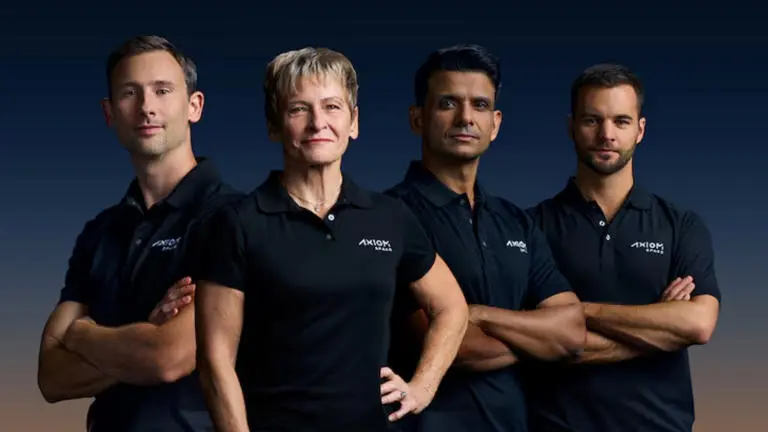
The launch is now scheduled for June 25, marking a monumental leap in India’s space legacy
A Delayed Dream Nears Reality: India’s Second Astronaut Set for Liftoff
Delayed Dream Reignited – After nearly four decades since Rakesh Sharma’s iconic voyage, India is poised to send its second astronaut into space. Group Captain Shubhanshu Shukla, a decorated Indian Air Force pilot, is set to launch aboard the Axiom-4 mission to the International Space Station (ISS) on June 25 at 12:01 PM IST. The mission, a collaboration between NASA, SpaceX, ISRO, and Axiom Space, has faced a series of delays since its original May 29 launch window.
The setbacks, ranging from oxidizer leaks in the Falcon 9 rocket to pressure anomalies aboard the ISS, have tested the patience of mission planners and space enthusiasts alike. Yet, with all technical issues reportedly resolved and weather conditions improving, the countdown is once again ticking toward liftoff from Launch Complex 39A at NASA’s Kennedy Space Center in Florida.
Shukla’s journey aboard SpaceX’s Dragon spacecraft will not only mark a personal milestone but also symbolize India’s growing footprint in global space exploration. The mission has been informally dubbed “Akash Ganga,” a nod to India’s celestial heritage and aspirations.
The Crew and the Mission: Science, Symbolism, and Sovereignty
The Axiom-4 crew is a diverse and accomplished team. Commanded by veteran NASA astronaut Dr. Peggy Whitson, America’s most experienced spacefarer with 675 days in orbit, the mission also includes Hungarian biophysicist Tibor Kapu and Polish engineer Slawosz Uznanski-Wisniewski as mission specialists. Shukla will serve as the pilot, representing India in a mission that blends scientific ambition with geopolitical symbolism.
Over the course of their two-week stay aboard the ISS, the crew will conduct more than 60 scientific experiments, including seven designed by Indian researchers. These range from microgravity studies to biomedical research, with potential applications in medicine, agriculture, and materials science.
India’s investment in the mission is substantial reportedly around ₹550 crore for Shukla’s seat alone. But the returns, both tangible and intangible, could be far greater. The mission is expected to inspire a new generation of Indian scientists and engineers while reinforcing India’s strategic partnerships with the U.S. and other spacefaring nations.
A Nation Watches: Pride, Pressure, and the Promise of Space
As the launch date approaches, anticipation is building across India. Shukla, currently in quarantine and medically cleared for flight, has become a national icon overnight. His journey is being closely followed by students, scientists, and citizens alike, many of whom see in him the embodiment of India’s spacefaring future.
The mission also carries symbolic weight. It comes at a time when India is rapidly expanding its space capabilities, from the Chandrayaan and Gaganyaan programs to its growing role in international space cooperation. A successful Axiom-4 mission would not only cement India’s return to human spaceflight but also signal its readiness to play a leading role in the next era of space exploration.
Yet, the pressure is palpable. With seven delays already behind it, the mission’s success hinges on flawless execution. NASA has confirmed that docking with the ISS is scheduled for June 26 at approximately 4:30 PM IST, pending favourable conditions.
For now, the world watches, and waits. If all goes as planned, Shubhanshu Shukla will soon etch his name alongside Rakesh Sharma in the annals of Indian space history, carrying with him the hopes of a billion people and the promise of a new cosmic chapter.
Stay updated with the latest news on Rapido Updates. Keep yourself updated with The World, India News, Entertainment, Market, Automobile, Gadgets, Sports, and many more
Also read – India’s Space Dream Paused: Shubham Shukla’s Axiom-4 Launch Delayed Again to June 22
12 thoughts on “India’s Space Delayed Dream Reignited: Shubhanshu Shukla’s Historic Axiom-4 Launch Eyes June 25 Liftoff After Multiple Delays”